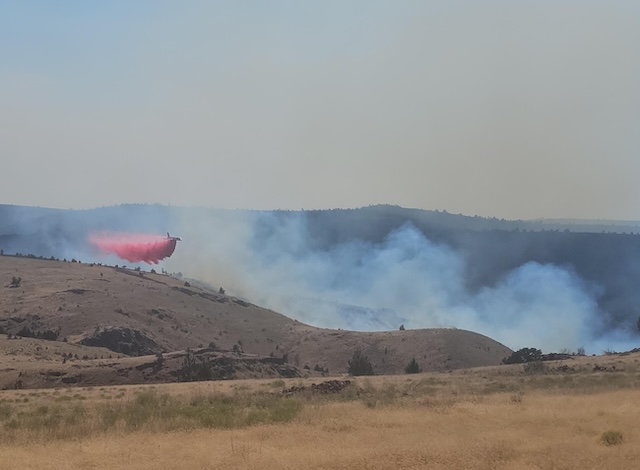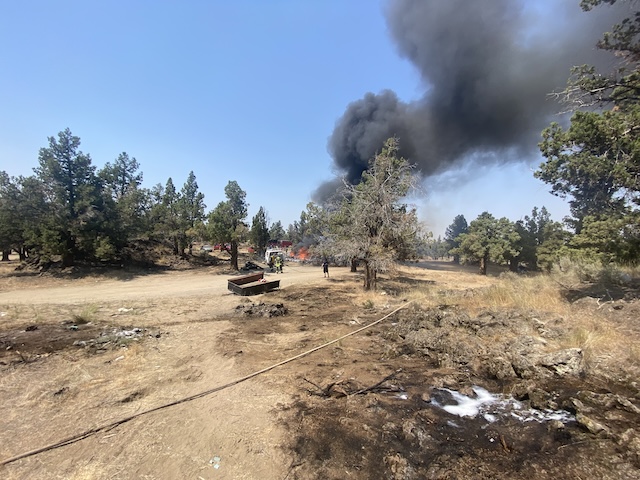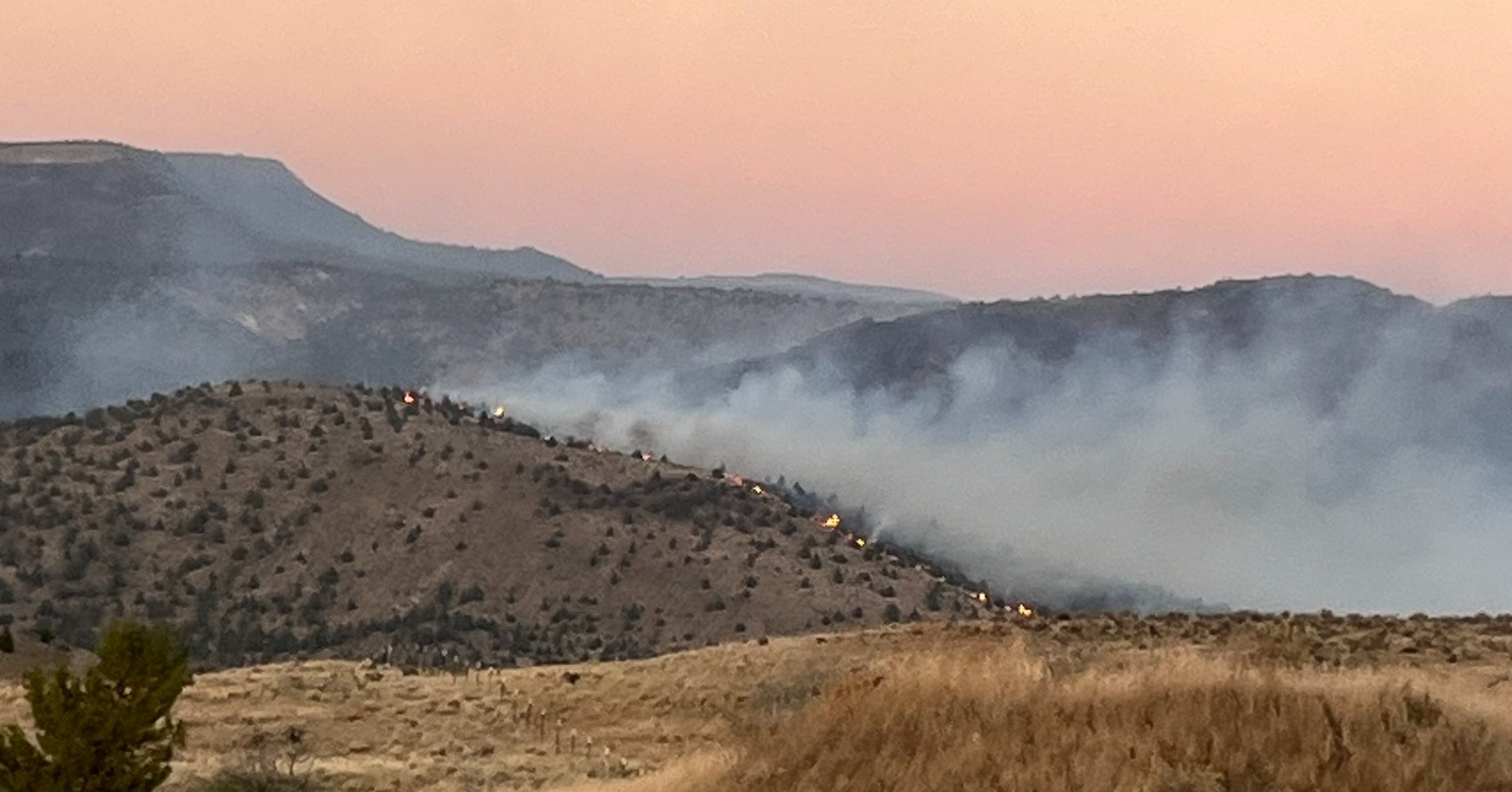A classicchildhood fantasyfor all ages
Published 12:00 am Friday, August 17, 2018

- Seventh Mountain Stables employee Riley Christensen, of Bend, helps Mike Colasurdo, of Olympia, Washington, onto a horse named Lola while preparing for a group trail ride at the Seventh Mountain Resort. (Andy Tullis)
Diane Schmidt says most kids seem drawn to the idea of riding horses — and the fantasy doesn’t disappear with age.
“It seems like it comes from reading ‘Black Beauty’ or something,” joked Schmidt, the owner and operator of Diane’s Riding Place, a 20-acre ranch north of Tumalo. “When I see 8-year-old grins on riders’ faces, whether they’re 8 or 48 or 58, I know it’s a success. Riding brings us all back to our childhoods.”
Trending
Schmidt, a second-generation horse trainer, gears her business toward newer riders and experienced equestrians who want to try Western-style riding after starting in another discipline. Many of her students are girls and boys who will eventually compete in peewee rodeo or join their high school equestrian team, but Schmidt said she also has a number of adult women who come to her for riding lessons.
“I get people ready to get their first horse, and then continue on with that horse,” Schmidt said. “So I get a lot of kids, but I’m also doing a lot of women, adult women, that have time in their lives now. Most of them, they did it when they were children, and now they’re coming back because their kids have grown up or are out of the house. ”
Annie Winter, district commissioner for the Central Oregon’s High Lakes Pony Club and a former coach and adviser for the Sisters High School equestrian team, said she has noticed that some parents start taking lessons at the same time as their children, so they can ride together as a family.
And then there is the classic motivation for picking up new hobbies: peer pressure.
“It’s the same reason that some people go boating or skiing: Their friends are doing it,” said Tahnee Hayden, a Terrebonne-based horse show judge who served as a coach and adviser for the Redmond High School equestrian team for 10 years. “At the high school level, we got a lot of kids whose friends were doing it, and they knew somebody who had a horse or borrowed a horse. And this was their first time learning to ride. Other people I’ve met, they don’t get their first horse until they’re somewhere in their 20s or maybe 30s, and they always wanted one growing up.”
Many new equestrians are more interested in indulging a childhood fantasy than any physical or emotional benefits, but Schmidt said horseback riding has plenty of those, no matter the discipline.
Trending
“It is great for the emotions: I have ladies that come to me who say, ‘This is my happy place,’” Schmidt said. “(Riding) makes you focus on the horse and you. You have to be very in-the-moment. ”
And if relief from the stress and anxiety of daily life does not sound enticing enough, riding can also tighten muscles, strengthen your core and improve your balance, all without the sort of repetitive-use injuries commonly associated with other recreational sports.
“You’re going to get a lot of leg muscle buildup,” said Hayden, who specializes in saddle seat, a category of English riding. “It makes you a great runner, for races.”
Hayden said that posting, in which the rider rises in and out of the saddle in time with the horse’s stride, is particularly effective at building lower-body strength.
Schmidt said she would recommend riding to anyone who wanted to improve or regain balance.
“If you’re riding a horse, you’re thinking about, if this horse goes one way or the other way, I need to have my core set so that I’m not taken off guard,” Schmidt said.
Hayden said stretching and balance exercises can help prevent sore muscles while new riders are getting used to the activity, but aches and pains should go away as the body acclimates to riding.
“It tones your muscles to even stay on a horse, because that body is constantly moving underneath you, and some of them jump and move a little more than others,” Hayden said. “And any equestrian that takes off for a few months, you go to get on again, and after that first ride back those muscles are so sore, because you haven’t been using them.”
The biggest concern for equestrians is not sore muscles or joints, but the chance of serious injuries caused by a fall or other accident. Wearing a helmet is an essential way of mitigating the damage if a horse trips or a rider is thrown.
“I always wear my helmet,” Hayden said. “I like to have the option, when I go into the show ring, to wear traditional wear, but when I’m practicing or trail riding, I always wear my helmet. I had a very well-trained horse that simply tripped while he was lopping, galloping. He tripped and stumbled and slipped over the top of me. I did have a helmet on, so I was OK. But even the best-trained horses, you can have some freak accident happen.”
Schmidt suggested cowboy boots — or proper riding boots for English-style equestrians — as another important aspect of staying safe while riding.
“When they are not wearing boots and they come to ride, that’s just ridiculous, that’s your communication with your horse,” Schmidt said, referring to the fact that riders direct the horse using pressure from their legs and feet. “If you don’t go out and buy a pair of boots, or adequate shoes to communicate with this 1,200-pound animal, I don’t think you’re putting the best foot forward.”
Hayden said new riders should trust their instincts while searching for their first trainer, and stressed that it is important to find someone who meshes with the rider’s personality.
“I think finding the right fit is maybe the best thing,” Hayden said. “Some trainers are very direct, and some people are very sensitive and don’t take that well. Some trainers are a little softer, and they might do better under them. Some people love working with this person. Others, not so much so. They do better with another person. It kind of is a personality thing more than anything.” •








